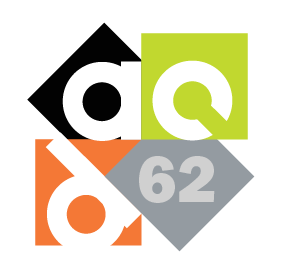I recently got access to a sparkling new demo machine for VLAB. Based on an AMD 9950X3D processor coupled with fast RAM and a blazing SSD. This is a perfect machine for running virtual platforms, with arguably the best microarchitecture available and a huge L3 cache (which is known to benefit code like simulations). Installed in a box that allows sustained 5GHz+ clocks. Nice. But when I started to run VLAB, things did not seem right. It took a long time to start a new simulation and some things just seemed “off”. What could be wrong?
Continue reading “It Must be the Antivirus”Category: off-topic
Stuff not directly related to the main topics of this blog.
DAC 2025 – All About AI

The 62nd Design Automation Conference (DAC 62) took place in San Francisco, California, USA, from June 22 to 25, 2025. It was the first time in three years that I attended the DAC (this blog is a little bit late, sorry for that). For those that do not know, the DAC is the biggest show in EDA, combining a major research conference with an industry exhibition and engineering track. This year the theme was AI (Artificial Intelligence), and not much else.
Continue reading “DAC 2025 – All About AI”Dat Dell Display is Doopid

I just fixed the strangest problem with my home office setup. The solution was as simple as the problem was weird to begin with. Conclusion: the IT checklists makes sense.
Continue reading “Dat Dell Display is Doopid”Testing Mistral Le Chat (Coding and Understanding Code)

I am coming back to my project of testing AI models, local and in the cloud, on a few coding problems that seem surprisingly difficult. The models I used in my previous posts (analyze code, write code, reason about code) were mostly from the US or China, even though I did try the French Mistral-7B model. In this post, I test the full-power cloud-based Mistral Le Chat, as well as the midsize local Codestral model. Time to try the European AI!
Continue reading “Testing Mistral Le Chat (Coding and Understanding Code)”A Lucky Trip to the Embedded World (2025)

Last week, I visited the Embedded World (2025). Only the exhibition, not the conference part. It was great to be back again, meeting old friends and making new acquaintances in the embedded business. It turns out I was rather lucky in getting there at all – there was that now infamous strike.
Continue reading “A Lucky Trip to the Embedded World (2025)”(Local) AI, Please Reason about Code

“Reasoning” models have become popular as a way to expand the capabilities of large language models (LLMs). Such models take more time “considering” a prompt and iterating it through the model several times, with the goal of mimicking how a human might go about solving a problem by breaking it down into steps. I tried the reasoning QwQ model on the coding problems from my previous blog posts (1,2). Quite funny and elucidating; I will quote the replies in full as they are worth reading.
Continue reading “(Local) AI, Please Reason about Code”(Local) AI, Please Write some Code

My previous blog post in this series tested the ability of a range of large language models to analyze a piece of C code and determine what a mystery function did. That was interesting and entertaining, but possibly not a particularly “fair” test of the models’ capabilities. Most of time, I think people use “AI” to help write code, not to understand some tricky piece of algorithmic code. Thus, I turn the problem around and ask the models to write code for the algorithm I previously asked them to analyze.
Continue reading “(Local) AI, Please Write some Code”(Local) AI, Please Explain This Code

Continuing my exploration of what a local AI model can do, I decided to test them on the task of code analysis. It would be so nice to have an AI model that is tuned and trained on a particular tool or programming system, and that can be distributed for users to run on their own on their local machine, server, or cloud VM. Avoiding the need to run and charge for a custom cloud service and ensuring confidentiality and availability.
Updated 2024-12-12 with Llama-3.3-70B
Continue reading “(Local) AI, Please Explain This Code”More Exploration of (Local) AI Models

In my previous blog post about the Intel AI Playground, I tested it by asking it to draw cars. In this post, I share some more exploration of these local AI models and their limitations. Turns out that cars are easy, other things not so much…
Continue reading “More Exploration of (Local) AI Models”Hi Local AI, Draw Me …

I recently built a new desktop computer, featuring an Intel ARC 770 graphics card (just to be different). The card is supported by the Intel AI Playground, which is a software package that makes it dead easy to run AI/large language models (LLM) locally on my GPU. I was curious as to just what this could do, as compared to the big AI models that run on cloud servers.
Continue reading “Hi Local AI, Draw Me …”Reversing out of Reverse

The Intel Simics simulator version 7 removed a long-standing feature from the simulator framework. Reverse execution is no longer available. In its place, in-memory snapshots were introduced, which arguably offer most of the benefits at a lower implementation cost. What happened? I’ve been asked about the reasoning behind the chance on several occasions since I left Intel. I’d like to share my perspective on the decision, as it highlights the challenges of turning an idea into a robust, shippable feature.
Continue reading “Reversing out of Reverse”Vilnius – History, Russia, Ukraine

We spent a few days in Vilnius at the end of October. Rather late in the tourist season, but the city was still open for business. It was a very good experience. Vilnius is one of the friendliest and cleanest places I have visited. Definitely on the “recommended” list. Here are some assorted notes from what we saw.
Continue reading “Vilnius – History, Russia, Ukraine”Time to Do Something New

The time has come to do something new. I am leaving Intel (and the Intel Simics team) at the end of September (2024). After more than twenty years with the team and the product this is a big step into the unknown. But when Intel offered a “retirement” package as part of its current round of cost reduction measures, I felt that it was a golden opportunity to find something new to do.
Continue reading “Time to Do Something New”Subscription Software Revisited: SnagIt

The trend to make everything into a subscription service instead of a pay-once use-forever model is well-established. I have defended it for professional software, and I am a mostly happy user of Microsoft365. Still, I must admit that I felt mildly annoyed when my favorite screen capture program, SnagIt, announced they would be switching to a subscription-only model.
Continue reading “Subscription Software Revisited: SnagIt”Visiting Prague

Over Easter, I took a short trip to Prague with parts of the family. It is a fascinating place – full of tourists and tourist businesses, but still feeling informal and homey. We tried to climb as many towers as we possibly could and visited a ton of sights in a few intense days.
Continue reading “Visiting Prague”